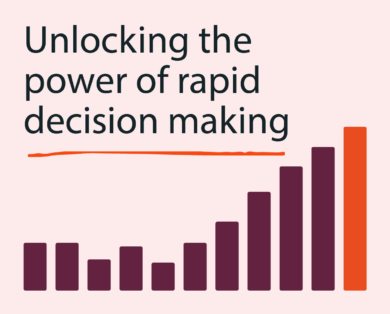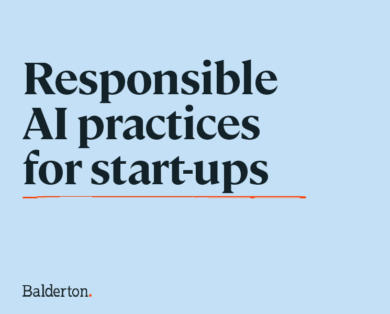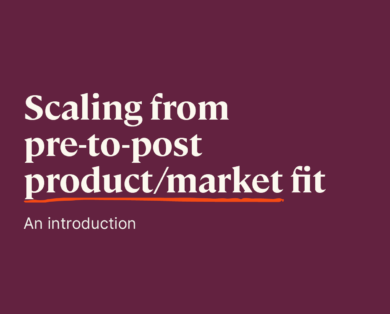- 09 April, 2025
We gathered together marketing leaders from our portfolio in a private masterclass, to hear Mike Butcher’s advice on how to gain the attention of top-tier journalists after the first ‘pop’ of excitement that follows a fundraising announcement has passed.
ABOUT MIKE BUTCHER MBE
Mike Butcher is the London-based Editor-at-large for TechCrunch. He’s also co-founder of Pathfounder editorial events and reports series on ‘impact innovation’, The Europas Awards, TechForUK, TechVets, Techfugees and TechHub. Mike is a regular tech commentator on the BBC, Sky News, CNN, CNBC and Aljazeera. Mike has advised previous UK governments on tech startup policy, was awarded an MBE in the Queen’s Birthday Honours and was also named as one of the 100 most connected men in the UK by GQ Magazine.
Mike shared:
- What makes a good post-fundraise story;
- How to pitch a story to get a journalist’s attention; and
- How a CEO should build relationships with journalists.
You can read our key takeaways from this insight-rich masterclass below.
Also read Mike’s blog post “How to tell stories about your startup beyond funding.”
See the slides he presented here. This masterclass was his 2020 update to his 2015 “how to get press for your startup” deck.
Know your journalist and stay close to the topics that interest them
Make sure you’re reading what the journalist is writing! This seems obvious, but surprisingly, doesn’t always happen.
Use Tools like Feedly to efficiently scan the news. (Feedly allows you to see headlines and excerpts via RSS, and then deep dive on those that are relevant.) Techmeme is another excellent resource, which you can use to keep yourself briefed: head over there daily and get a big download of everything that’s being talked about. Other useful services include HelpAReporter.com, JournoRequests.com, and Muckrack.com.
Use Twitter! Most major journalists are now on Twitter although this wasn’t always the case. Reaching out to journalists on Twitter, or at least keeping an eye on what they’re talking about, is a way of understanding how they’re thinking about subjects. Journalists often test out story ideas on Twitter or ask questions about things they are curious about.
Like all of us, journalists care about their work. So comment, like, RT, and share articles they’ve written, if you’ve found them valuable.
Be relevant
People sometimes forget what the word ‘news’ means. News is something new, obviously. But, more importantly, it’s something relevant right now. Ask yourselves: are you relevant in the context of your ecosystem, and in the wider world? And how are you relevant? Top journalists are focused on what’s relevant now, and where things are going. It’s critical to acknowledge your place in today’s news stories.
No doubt you have stories about key new hires, new clients, new product releases. But these aren’t always terribly exciting to journalists. (Unless you’ve appointed Beyoncé to your Board.)
Get creative with your post-fundraise story-telling
For example, think about how you become engaged in the bigger issue stories of interest to journalists.
This issue could be outside your immediate product or service — for example, in areas of disability, accessibility, politics, disinformation, access to talent, or climate change. Perhaps you are giving back to society in a bigger way than ‘just’ selling a product or service?
However, a cautionary note: make sure your connection to that bigger issue is really substantial and substantive. Otherwise, it risks appearing as marketing ‘fluff.’On a practical level, Mike recommends you sit down regularly with the creative story-tellers on your team and ask yourselves: what are the next big ‘moments’ you’re aiming for in your narrative? What’s your relevance in the wider context? How do you fit into what’s going on around you and into trends in consumer behaviour?
You can also consider ‘curating’ your own story ideas. Organize roundtables or events that discuss interesting topics, with some interesting minds gathered together, and invite a journalist along. Show that you’re the expert.
Maintain your newsworthiness — a combination of timeliness, relevance and novelty.
Affirm your competitive context
From Mike’s viewpoint, it’s not only ok to compare yourself to competitors, it’s recommended. Comparing yourself to others really helps journalists to understand both what your startup does, and where to place you in their head.
Mike encourages you not to be afraid to challenge ‘the big’ competitors. As long as you can say something of substance, it is worth doing. This is not about ‘attacking’ your competitors. It’s about challenging them.
This can work out well for smaller startups willing to ‘take on’ a giant competitor — look at the coverage Postmates got for taking on Uber (and they ultimately got acquired by Uber).
Invest in your relationships with journalists and remember it’s a two-way street
You should develop a positive and useful working relationship with journalists — one that is non-transactional. Don’t be the person who only reaches out to journalists when you need something. Your next media coverage moment may be in a week, or may be months from now. Keep your contacts ‘warm’ between those moments and even if a journalist does not pick up your ideas now, they may return to them later.
Journalists will often give more time of day to people that are useful to them. Can you offer introductions or an inside opinion on a wider topic the journalist is researching? If you see a journalist asking questions about something you know about, offer your help. They are working hard to stay on top of many difficult topics, and while journalists may be interested in what your company is doing, they are really interested in what you know.
Mike recommends you check in with the journalists you’re following regularly. You may have developed a ‘top’ list of ten to fifteen journalists you specifically want to engage closely — so think strategically about how to do that in a non-spammy way.
Mike cited one startup that cleverly sent a (short!) email every month to six weeks to a select group of journalists. This CEO wrote a concise list of company and ecosystem updates, along with suggestions for story ideas and commentary on new topics that they felt worth following. The email provided the option for the journalist to ‘opt out’ at any point.
While you may not always get something in return immediately, this investment can pay off in the longer term. On a related topic, you honestly don’t always need a press release. (Though we would say that a press release for big news is helpful to ensure the internal teams agree on the message and stats.) If a huge piece of news breaks and you have something unique and insightful to say, you’ll lose valuable time writing a release. If you can see things further ahead in your unique area that journalists may not share your insight and help them connect the dots with a quick email.
Finally, make sure your CEO is available when you do want to announce something, or you want to offer commentary. Don’t allow your PR agencies, or heads of comms or marketing, to be a bottleneck. Almost always, the journalist wants to talk directly to the CEO and decision-makers.
On the topic of emails…
Journalists get hundreds and hundreds of emails (as well as DMs, WhatsApps, etc.) every single day. Staying on top of them all is a mighty task. Respect their time and attention, and don’t spam repeatedly through multiple channels. (Mike used to tell certain people to use ‘code words’ in a subject line to get his attention, though we are fairly sure that trick was only for a few people!)
Finally, prepare for rejection…
Don’t take it personally if you don’t hear back, or a journalist simply isn’t interested in picking up your most recent story idea. Stories are picked up, and dropped, for countless reasons. You can ask for feedback on why a story didn’t run, but you may not get a response there either — if only because journalists are incredibly busy people.
Plus, don’t pitch a dull story when you know that there is something more exciting to share in a month. You risk irritating the journalist. Always be polite and listen to what they need. (For example, in the last few months any stories not related to COVID-19 were considered, for better or worse, irrelevant.)
Drop the dead donkey!













